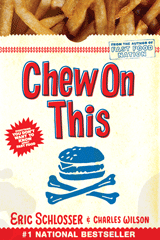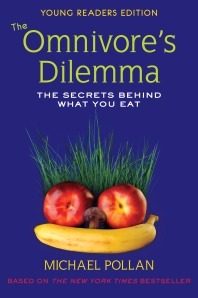 In this book you will learn things that you never knew about food. For example you learn about the fifteen year old who invented the hamburger. You will see how French fries are often shot through a superpowerd gun-and what makes them taste so good. As well as learning the secret ingredient that makes your drink pink and a special ingredient often found in meat. You will explore the six weeks that a fast food chicken lives before it becomes a chicken nugget. Examine a table of healthy and unhealthy human body parts- and see what happens inside your body when you eat too much junk. This book is an eye opener to what we are really eating outside.
In this book you will learn things that you never knew about food. For example you learn about the fifteen year old who invented the hamburger. You will see how French fries are often shot through a superpowerd gun-and what makes them taste so good. As well as learning the secret ingredient that makes your drink pink and a special ingredient often found in meat. You will explore the six weeks that a fast food chicken lives before it becomes a chicken nugget. Examine a table of healthy and unhealthy human body parts- and see what happens inside your body when you eat too much junk. This book is an eye opener to what we are really eating outside.
Excerpt: the story of fast food begins in October 1885, near the small town of Seymour, Wisconsin. A Friendly and outgoing fifteen-year-old boy named Charllie Nagreen was driving his family’s ox cart down a dirt road amid wide-open fields. Charlie was going to Outagamie County’s first annual fair, where he wanted to earn some extra money selling meatballs. What happened next was the unlikely origin of a delicious sandwich that would one day change the world. As Charlie sold meatballs at the fair, he noticed that customers had trouble eating them and strolling at the same time. People were impatient. They wanted to visit Mr. John Bull popular beehives(encased in glass), to see fancy new harvesting machines, and to enjoy all the other thrilling attraction at the fair. they didn’t want to waste time eating meatballs put them between two slices of bread, people could walk and eat. And so Charlie invented the hamburger.


